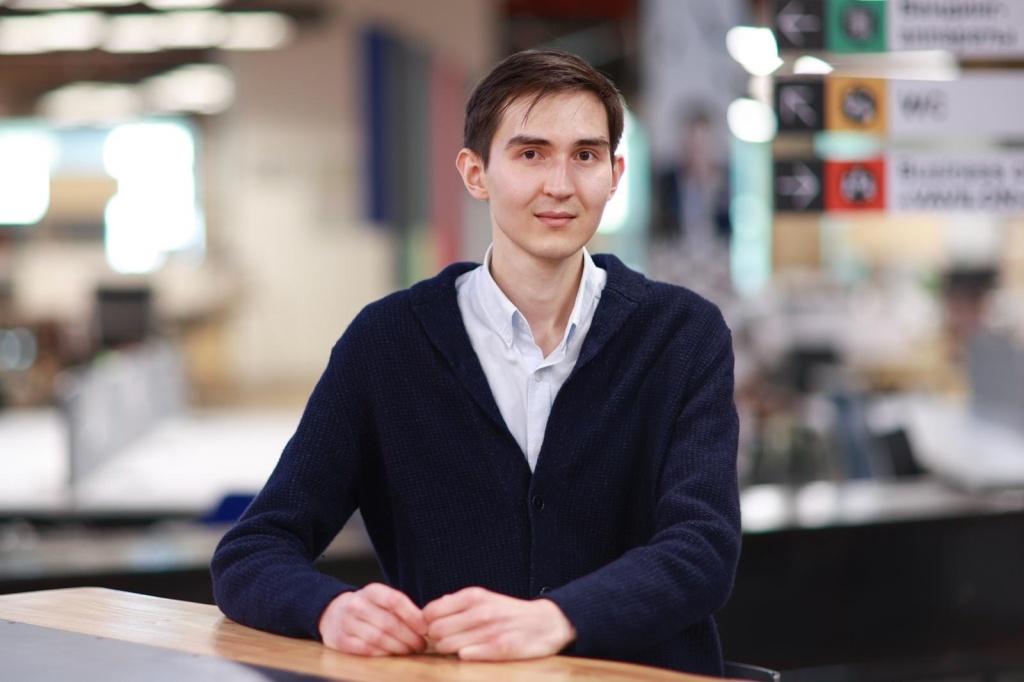Getting into MIT isn’t just about test scores. It’s about solving problems, showing leadership, and telling a story that’s truly yours. Torezhan and Dauren explain how they did it — and what they learned in classrooms that shape the future of finance, nuclear science, and beyond.
Torezhan Amanzholov, 30, Almaty, Portfolio Manager, ForteFinance JSC, linkedin

On choosing a university
I chose MIT because it’s the most prestigious technical university in the world — one that sets trends in science, technology, and business. Its alumni and faculty are global leaders, and the research conducted at MIT shapes the future of many industries.
I was especially drawn to the field of finance, and MIT has played a pivotal role in developing financial engineering — a discipline that underpins the global financial system. Mathematical models and methods developed at MIT have significantly influenced risk management and investment strategies across top financial institutions.
Another major factor was the opportunity to attend lectures by Nobel laureate Robert Merton, one of the creators of the Black-Scholes-Merton model for option pricing, which became the mathematical foundation of today’s derivatives market. Studying under such individuals is a once-in-a-lifetime opportunity.
On the application process
The admissions process at MIT had several stages. I submitted an application, wrote a statement of purpose, and took the GRE standardized test.
But the most challenging and unexpected part was the final interview with Heidi Pickett, Director of the Master of Finance program. She flew to London, where I was studying mathematics and economics at UCL, and conducted a detailed interview. It covered not just academics but also my professional background, leadership potential, and ambitions.
The interview was so thorough that at one point, it felt less like a program director and more like a CIA agent trying to understand everything about me. It was a true stress test — and the final step before admission.
MIT evaluates candidates holistically. Grades matter, but so do recommendations, work experience, personality traits, and the ability to think creatively. I scored well on the GRE, but I also had strong recommendations from my dean and managers, along with substantial experience in finance.
MIT looks for people who can solve complex problems, analyze data, and adapt quickly to change. In my case, what mattered most wasn’t just academic success, but a deep interest in financial markets and the ability to apply knowledge in practice.
On studying at MIT
At MIT, grades are relative — they depend not only on your own performance but also on the level of your peers. Final grades are based not just on exams, but also on midterms, group projects, and real-world case studies tackled throughout the semester.
Professors are deeply engaged in the learning process. They don’t just lecture — they challenge students with real industry problems. One of the most memorable projects for me was optimizing the MIT Endowment Fund’s asset allocation — then valued at $13.5 billion. Our small team of seven had an ambitious goal: to revise the fund’s investment strategy and propose approaches that could increase returns or reduce risk. The idea that your work could influence the strategy of one of the world’s largest university endowments was both inspiring and humbling. But this is what makes MIT unique: you don’t just learn theory — you tackle global-scale challenges.

MIT also provides comprehensive student support — in academics, career development, and campus life. But the most valuable part? Your classmates. Despite the competition, you find not rivals but allies — people who face challenges alongside you, helping you grow and evolve.
MIT is a brand that opens doors on its own. The name alone creates the impression that you're a highly specialized expert, which brings vast career opportunities. But no matter how prestigious the diploma sounds, what really counts are your actual skills and the value you can bring. The university gives you a powerful start — but everything after that is up to you.
Advice for applicants
The most important qualities for getting in — and succeeding in life — are perseverance, staying calm under pressure, and a mindset of never giving up. No matter the challenge, if you don’t give up, you’ll find a way to reach your goal.
Beyond that, it’s essential to develop critical thinking, the ability to analyze information, find unconventional solutions, and make decisions under pressure. Social skills are also crucial — emotional intelligence, resilience, and the ability to listen, understand, and respect others.
You also need empathy — the ability to relate to others, build trust, and support those around you. These qualities will serve you not only in academics and your career but also in unlocking incredible opportunities.
I applied almost spontaneously, relying on my natural abilities and acquired skills. I believe if you’re a good fit for MIT, your abilities and ambition will guide you there naturally. Still, I wouldn’t have made it without the people who supported me. My aunt Gulnazira was a particularly strong pillar — she always believed in me and helped me stay confident.
MIT gave me invaluable knowledge, but more importantly, it taught me that success is never a solo journey. You need people around you who help you stay focused on what truly matters and filter out the noise.
Dauren Sarsenbayev, 26, Cambridge, PhD candidate, research associate, and teaching assistant at the Department of Nuclear Science and Engineering, MIT, linkedin

On choosing a university
I applied to several U.S. universities and received offers from some of them. After visiting campuses and speaking with professors, I realized that the research most aligned with my interests was being conducted in a lab led by a professor at MIT.
On the application process
The process of applying to a PhD program at MIT is standard but extremely competitive. It includes:
1. Taking an English proficiency test.
2. Writing a statement of purpose — it’s important to tell your personal story, values, and motivation.
3. Preparing a technical essay describing your scientific experience and research interests — this is where you show how your knowledge and skills fit into MIT’s research environment.
4. Submitting recommendation letters — these are one of the key elements of the application.
In my experience, MIT doesn’t focus on a single metric, but rather on a combination of factors. Grades matter, but they’re not the deciding factor. Even with excellent scores, you may not get accepted without research experience. Strong recommendations play a crucial role — they should not only confirm academic success but also highlight critical thinking, problem-solving abilities, and independent research skills. Applicants don’t get to see their recommendation letters, so it’s essential to prove yourself as a worthy candidate in advance.
Extracurricular achievements are also valued, especially those related to science or that demonstrate leadership and independence.
The most common mistake is writing an essay that sounds “perfect” but doesn’t reflect your real personality. MIT isn’t looking for “ideal students” — they value unique thinking, a passion for discovery, and a willingness to take on difficult challenges.
For undergraduate applicants, it’s important to show initiative, including participation in volunteer work or other meaningful activities. Applicants to Master’s or PhD programs should focus on research experience and professional accomplishments.
On studying at MIT
In Kazakhstan, my undergraduate education followed a structured path: general courses first, followed by specialization. At MIT, the system is more flexible — but the workload is significantly more intense.
What stands out most is the practical approach to learning. It’s not just about theory — students work on real projects, model complex systems, and solve problems that can shape entire industries.

The grading system varies by course. Some have strict exams and tests, especially in theoretical subjects. Others focus on project-based work, where creativity and problem-solving are key. Some courses are research-based, with grades depending on how deeply you engage with the topic.
MIT labs are equipped with the most advanced tools and software. Twice a year, the university hosts career fairs with major global companies in attendance. The MIT campus is located in Cambridge, directly across from offices of Google, Pfizer, and IBM — making internships much more accessible.
Advice for applicants
If you can demonstrate your skills and knowledge, doors open in every field — from science to business and startups. But it’s important to understand that a diploma alone won’t guarantee a high-paying job. What truly matters is what you’ve learned and how you can apply it.
Don’t set your goal as “getting into MIT” or any other top school. Instead, ask yourself: “How will this help me contribute to science, technology, and society?”
For me, the most valuable preparation resource was talking to people who had already gone through this journey. I spoke with PhD students and professors, studied their approaches to admissions and research, and watched interviews with them. This gave me a clearer understanding of what really matters for success.
Other helpful resources include MIT OpenCourseWare, which offers free courses on a wide range of topics, and YouTube channels focused on academic writing, which help you craft a strong essay for your application